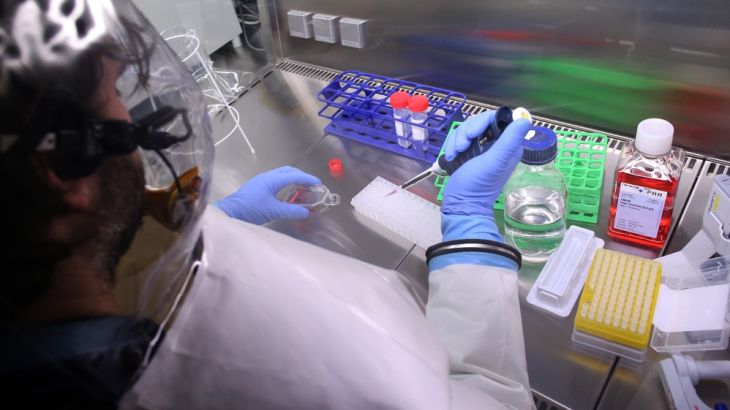The UK’s genome sequencing project
The 100,000 Genome Project looks to find what causes rare diseases and cancers.

On a chilly spring day in a cottage about two hours west of London, Georgia Walburn-Green is dancing to ”Singing in the Rain”.
The four-year-old with shoulder-length blonde hair tied in two pony tails is smiling and laughing but she isn’t singing. Because she can’t.
Keep reading
list of 4 itemsWoman, seeking loan, wheels corpse into Brazilian bank
UK set to ban tobacco sales for a ‘smoke-free’ generation. Will it work?
Poland lawmakers take steps towards liberalising abortion laws
Georgia was born with a rare genetic condition and doctors don’t know if she will ever talk.
Her mother, Amanda, is teaching Georgia how to sign and the little girl uses special straws and whistles to try and develop the muscles around her mouth. Georgia’s eyesight is poor, her kidneys don’t work properly and for years doctors couldn’t figure out what was wrong.
The Walburn-Greens volunteered to take part in the British government’s 100,000 Genome Project, sequencing genes or mapping the genetic blueprint of 70,000 people to try and find what causes rare diseases and cancers.
Georgia is one of the first success stories.
Doctors took about a teaspoon of blood from Georgia and her parents.
I visited a laboratory at the UK’s foremost children’s hospital, Great Ormond Street, where lab technician Jaspreet Chana and her colleagues, wearing white coats and sterile, lilac-coloured gloves, prepare the samples for testing.
Gene flaw
The blood is spun three times in a centrifuge separating out the plasma. The red blood is discarded and what’s left in a small beaker is about a finger’s width of plasma, the colour and consistency of urine.
It’s sent to a specialist facility where high-tech machines use electricity and chemicals to excite the molecules.
The process – genome sequencing – reveals a string of information which explains how our bodies’ chemical building blocks are ordered and how they work together.
In Georgia’s case there’s a mutation, or flaw, in her KDM5B gene.
Neither of her parents have that mutation so it occurred spontaneously in Georgia. That was incredibly welcome news for Amanda.
“We’d put the idea of having more children on hold. Because having another child with a significant disability would have been hard for us as a family and also not right for Georgia. Because she’s a very demanding child as it is and she needs all of our attention,” Amanda told me.

”So we had put that on hold until we knew if it was an inherited condition. But Georgia is growing and becoming older and I was becoming older and it felt like time was running out so it was amazing to get that call, hopefully just in time to give us the opportunity to try.”
The answer, which came about a year after they were first tested, also means the family can connect with others who have the rare condition; there are at least two children in the UK with the same gene flaw.
Maria Bitner-Glindzicz, a genetic consultant at Great Ormond Street Hospital, said the half a billion dollar project is giving scientists valuable insights into rare diseases like Georgia’s.
”It’s too early to say we can treat it but we will be able to hopefully learn in the next few years, is what this gene [KDM5B] is actually doing in the body, why are things going wrong, how early do they go wrong and what do we know about the biological pathways that it influences and governs,” Bitner-Glindzicz said.
She said it was very satisfying to be able to tell families what is causing their children’s problems. But the ultimate goal, Bitner-Glinzicz said, is to be able to treat and even cure the diseases.